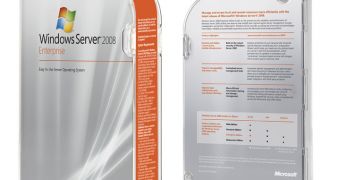Microsoft released Windows Server 2008 Hyper-V to manufacturing on June 26, 2008. The final version of Hyper-V is designed to integrate exclusively with the gold build of Windows Server 2008, RTM'd on February 4, and launched on February 27. The hypervisor-based virtualization technology is available as a role in select SKUs of Microsoft's latest Windows server operating system, both the 32-bit and 64-bit versions. Microsoft is, in fact, serving Hyper-V RTM as an update to Windows Server 2008, and is focusing on the hypervisor as the right catalyst to democratize virtualization.
"The most significant change in Hyper-V RTM is the extended list of supported operating systems running in virtual machines," revealed John Howard, Senior Program Manager, Hyper-V team, Windows Core Operating System Division.
"Many people have asked for additional guest OS support. Major additions: Windows 2000 Server/Advanced Server, Windows XP x64 (1/2CPU), Windows Vista x64 SP1 (1/2CPU), Windows Server 2003 x64 2CPU," added Taylor Brown, Hyper-V Integration Test Lead.
Windows Server 2008 Hyper-V delivers support for no less than seven different operating systems, namely sic client and server versions of Windows and one Linux platform. Users will be able to run as guest operating systems in Hyper-V: Novel's 32-bit and 64-bit SUSE Linux Enterprise Server 10 with SP1 and SP2, but also the x86 and x84 editions of Windows Vista SP1, Windows XP SP2/SP3, Windows 2000 SP4, Windows Server 2003 SP2, Windows Server HPC 2008 and, of course, Windows Server 2008.
Brown made a complete list of the guest platforms which are supported by Hyper-V, indicating the various editions of the operating systems that can be integrated with the hypervisor. Microsoft also pointed out the maximum number of virtualized processors that can be run with each guest operating system. The information is available via the image on the left.

 14 DAY TRIAL //
14 DAY TRIAL //